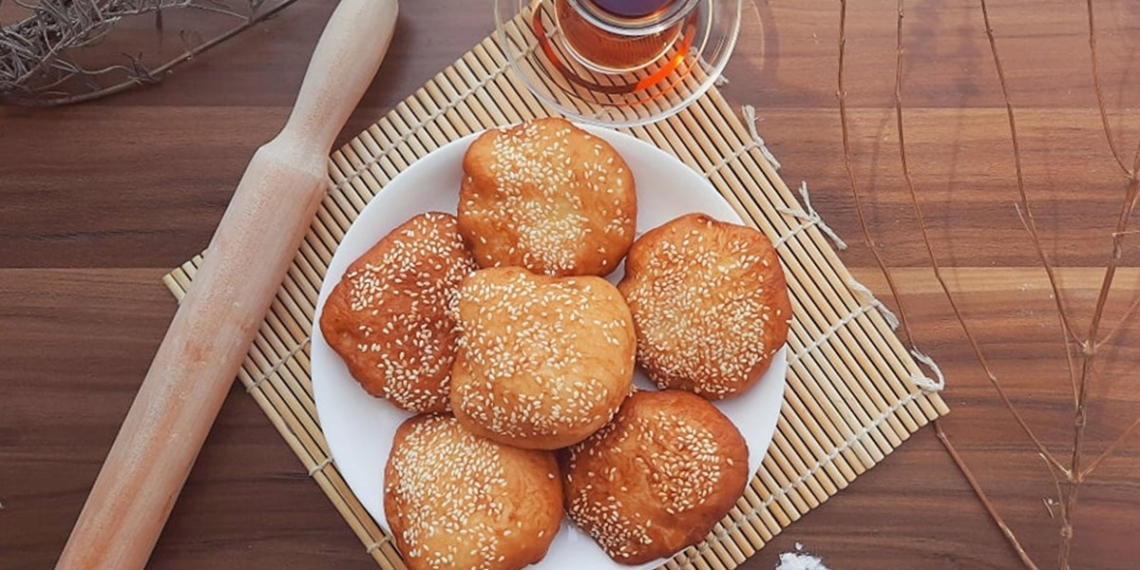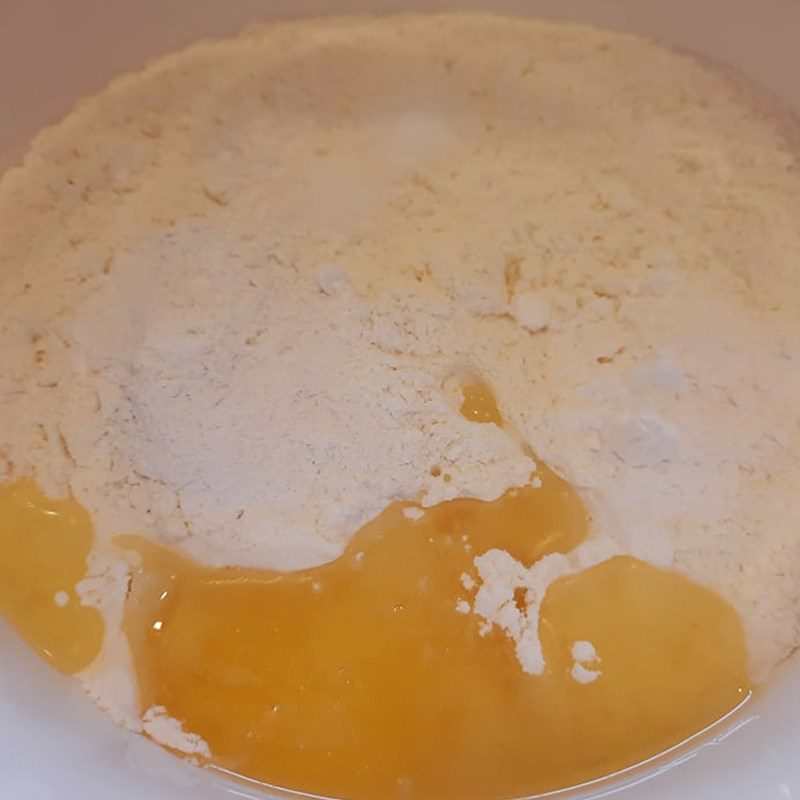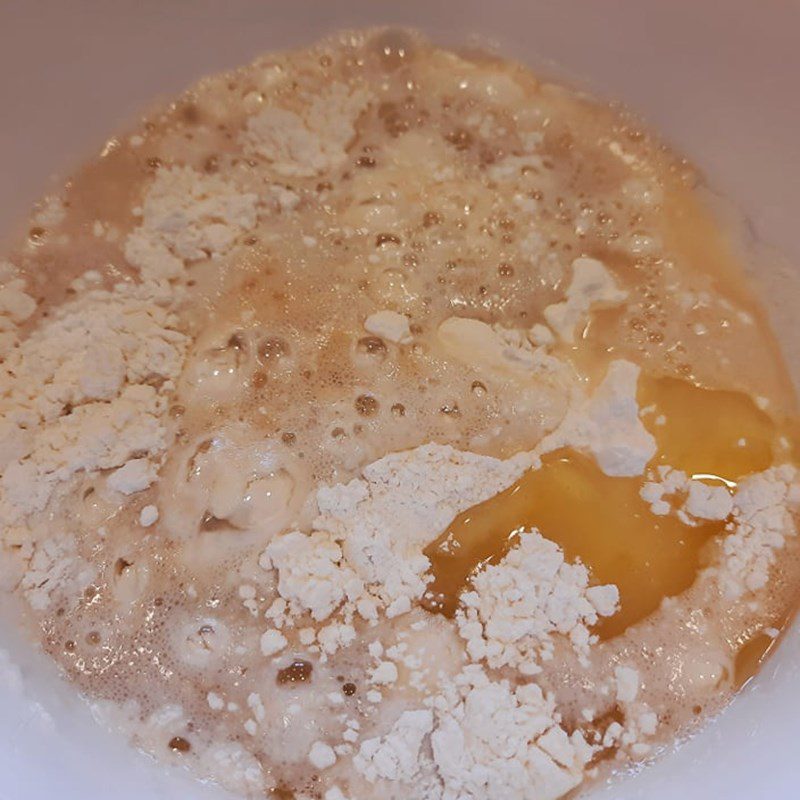-
Preparation
45 minutes
-
Difficulty
Medium
Deep-fried doughnuts are one of the doughnut dishes quite familiar that surely everyone has tried at least once and never forgets that flavor. Today, without going far, you can get in the kitchen and try making soft and delicious deep-fried doughnuts with the simple recipe from TasteVN!
Ingredients for Deep-fried Doughnuts For 6 pieces
All-purpose flour 250 gr Baking powder 8 gr (baking powder) Dry yeast 3 gr White sesame 50 gr (sesame) Granulated sugar 50 gr Vanilla sugar 5 gr (or 1/2 teaspoon of vanilla extract) Salt 1 gr Cooking oil 320 ml
Ingredient Image
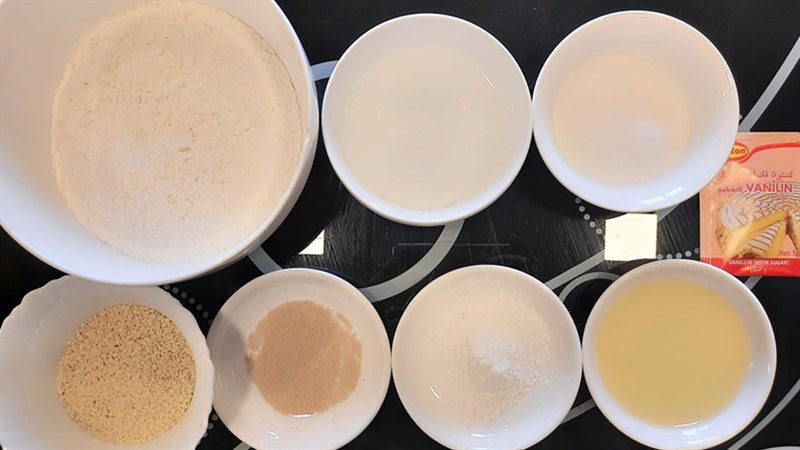
How to Make Deep-fried Doughnuts
-
Activate the yeast
You proceed to activate the yeast with sugar and warm water.
Add 50gr of sugar into 130ml of warm water at about 30 degrees Celsius and stir until dissolved; then add 3gr of dry yeast and stir. Let it sit for 10 minutes until the yeast rises like crab bricks (as shown in the photo).
Tip:
- If the yeast is instant dry yeast and still fresh, you can mix it directly with the flour without activating it.
- If the yeast has been stored for a long time, activate it to check if it is still active.
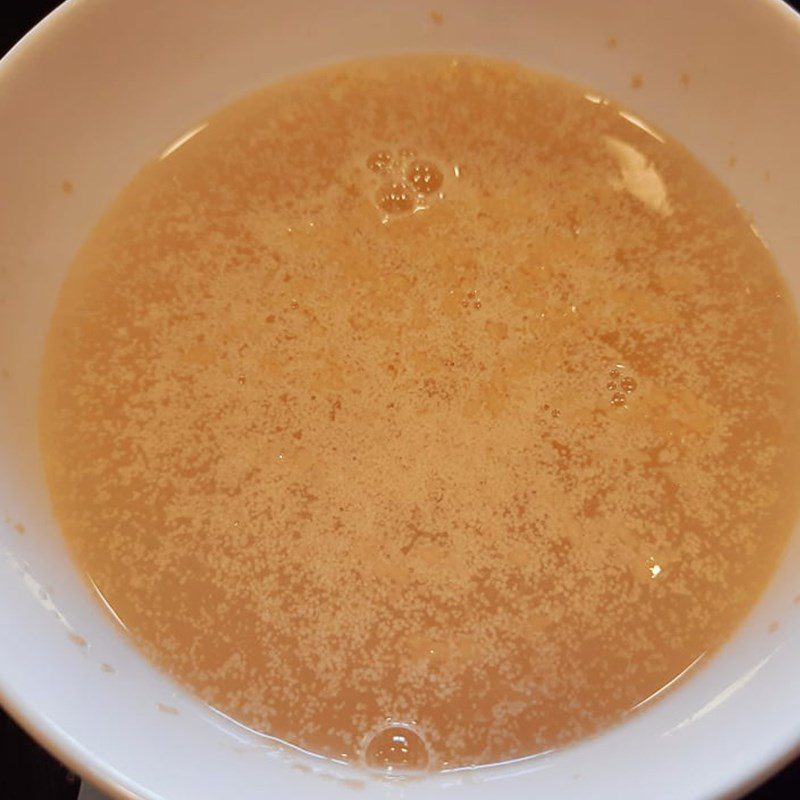
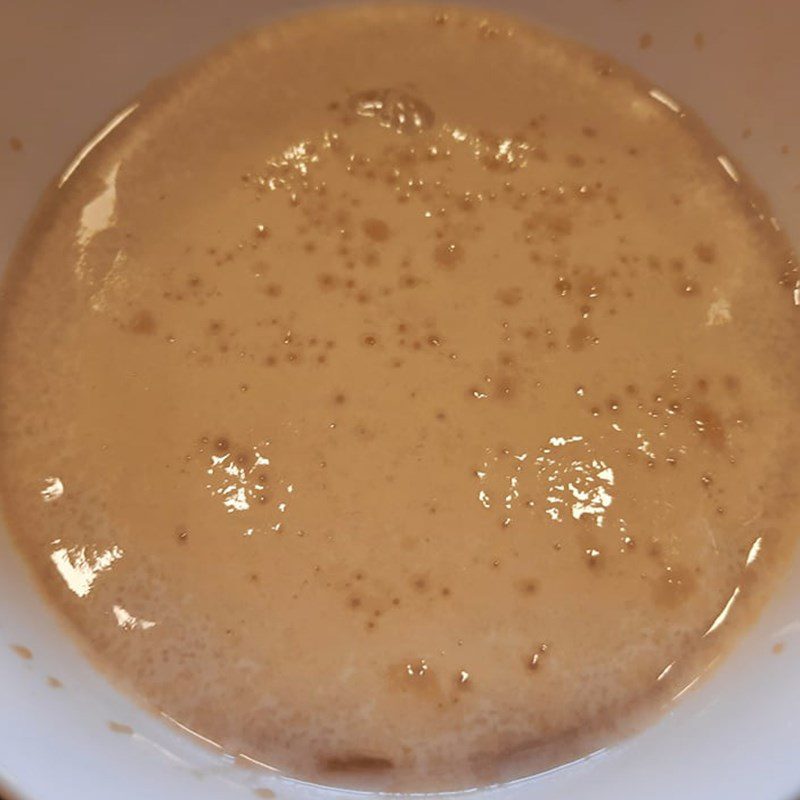
-
Knead and proof the dough
After mixing the dough, place it on a cutting board and knead until the dough is smooth, elastic, and not sticky to your hands.
Tip:
- If the flour has been stored for a long time, you may need to add a little water to create moisture, preventing the dough from drying out while kneading.
- If the dough sticks to your hands, use the “slap the dough” method. Use your hands to pull the dough and slap it down onto the cutting board, then fold it back. The more you slap, the drier the dough will become and it will no longer stick to your hands.
After kneading, place the dough into a large bowl, cover the bowl tightly, and let it proof at room temperature of about 27°C. If it’s hot outside, proof for about 1 hour or 2 hours if it’s cold; you can preheat the oven to about 30°C, then turn it off, and place the covered bowl inside the oven to proof.
Note: Do not proof for too long, as the dough will turn sour, smell of yeast, and the cake will not rise. Also, do not proof the dough at too high a temperature, as it can kill the yeast, which will also prevent the cake from rising.
The dough after proofing will expand 2 – 2.5 times compared to the original. Press your finger in the middle of the dough. If the dough sinks down and is not elastic, it means the dough has proofed enough.
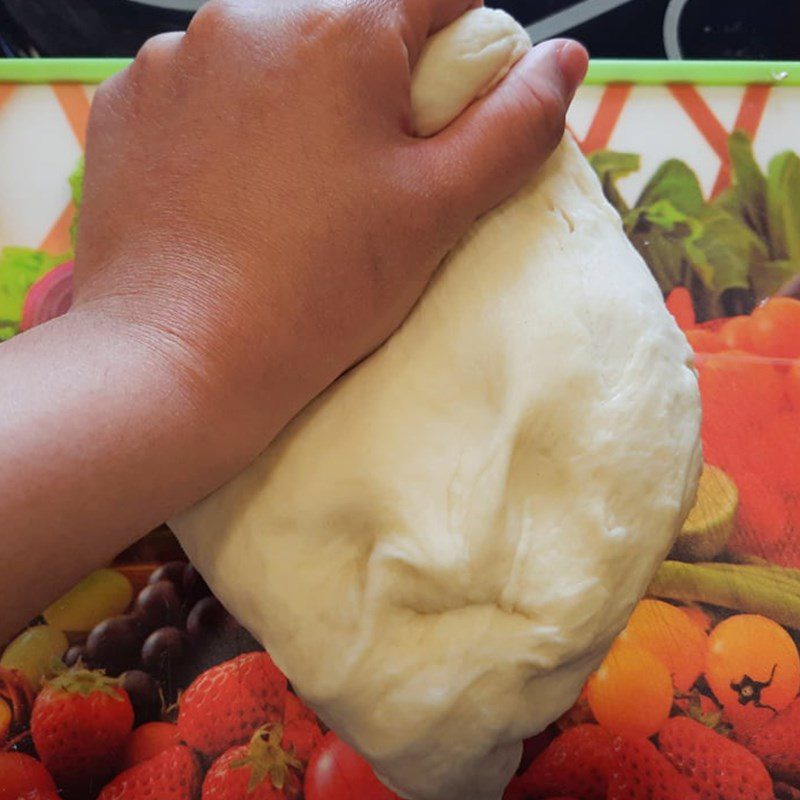
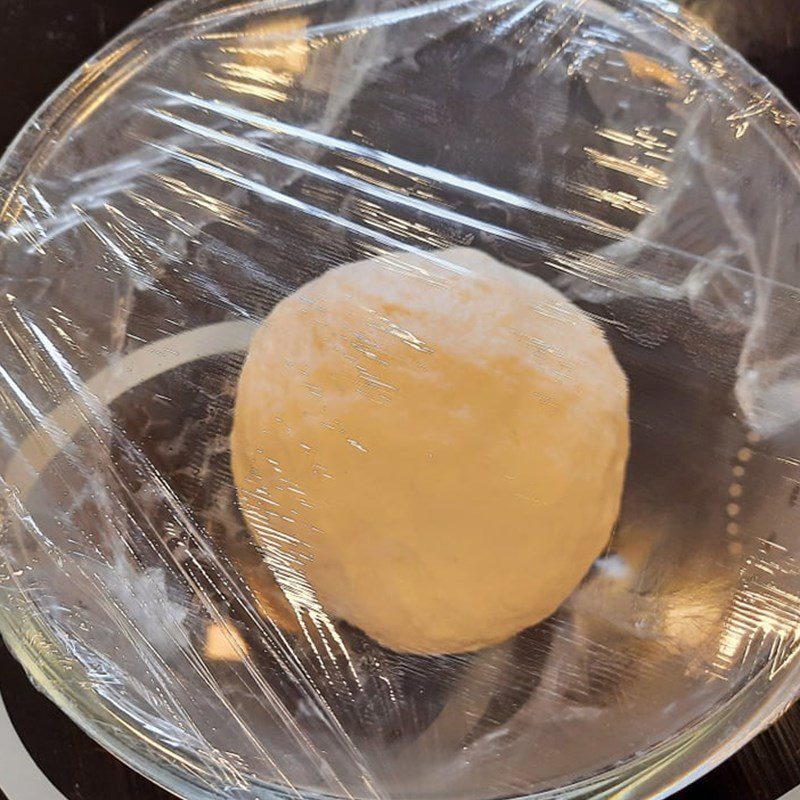

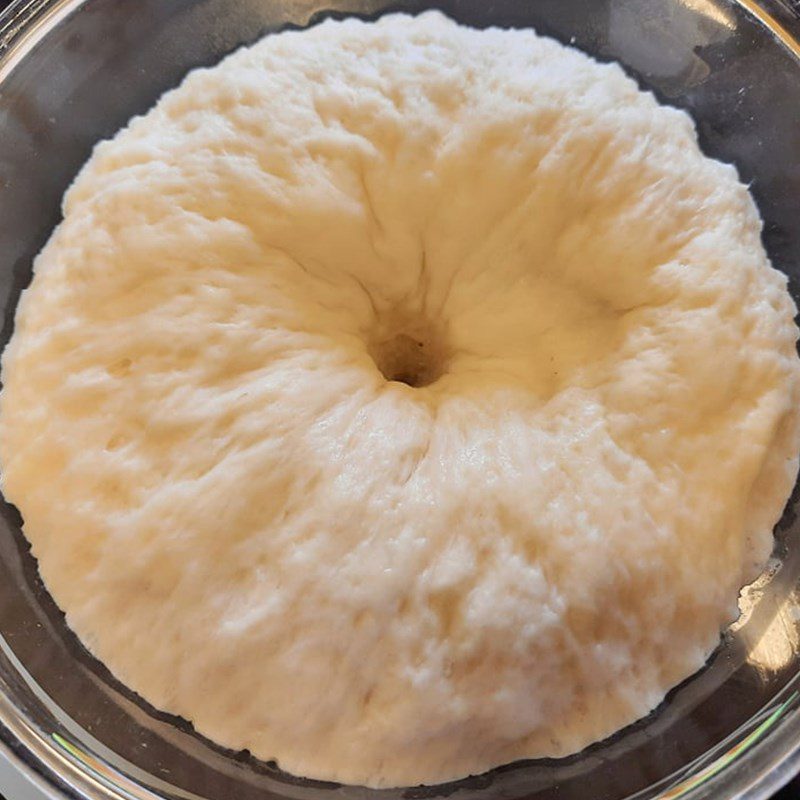
-
Shaping
After proofing, take the dough out and knead lightly for about 2 – 3 minutes, divide the dough into pieces weighing 48 – 50g.
Continue to roll the dough into round balls, then use plastic wrap to proof the dough for the second time for about 20 minutes at a temperature of about 35°C, to allow the dough to rise further.
Tip
- You can turn on the air conditioner or put it in the oven to adjust the temperature and proof like the first time (step 3).
- Do not proof for too long as it will cause the cake to rise poorly or not at all.
After proofing, roll each ball in sesame seeds so that the seeds stick and flatten the dough to a thickness of about 1/3 of a finger joint. Wherever the seeds do not stick, sprinkle sesame on top and continue to roll to adhere.
Note not to roll too thin; rolling it to the thickness shown in the images is fine, as rolling it too thin will also prevent the cake from rising, and after frying, the cake will become tough.


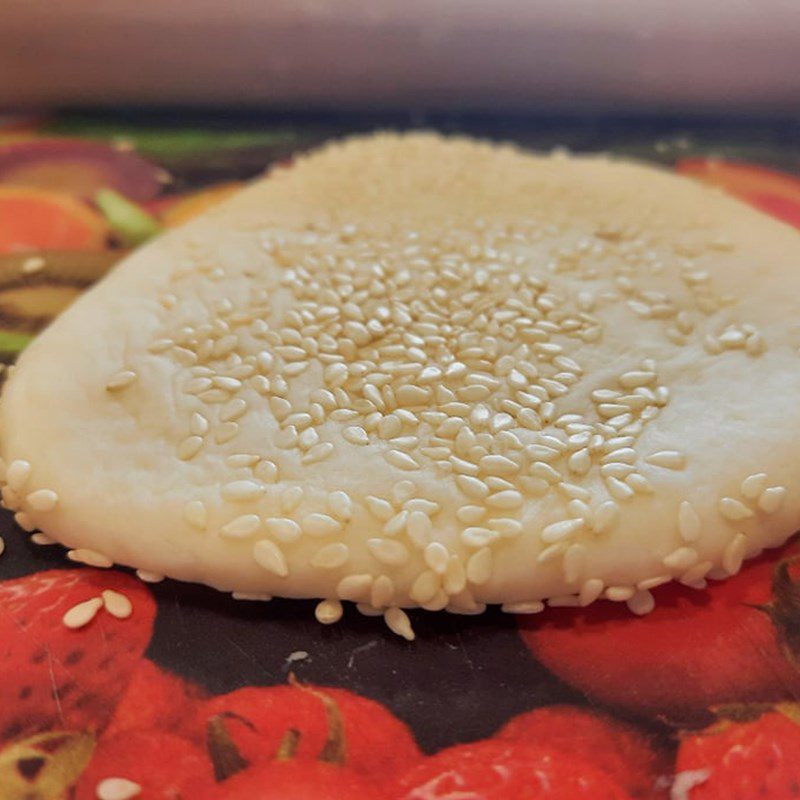
-
Frying the Cake
Place a pan on the stove and pour in about 300ml of oil (or more), wait for the oil to get really hot, then lower the heat to medium and add the cake to fry.
Use chopsticks to press down on the two edges of the cake to submerge it in oil so that the cake puffs up. Turn both sides regularly to avoid burning the cake.
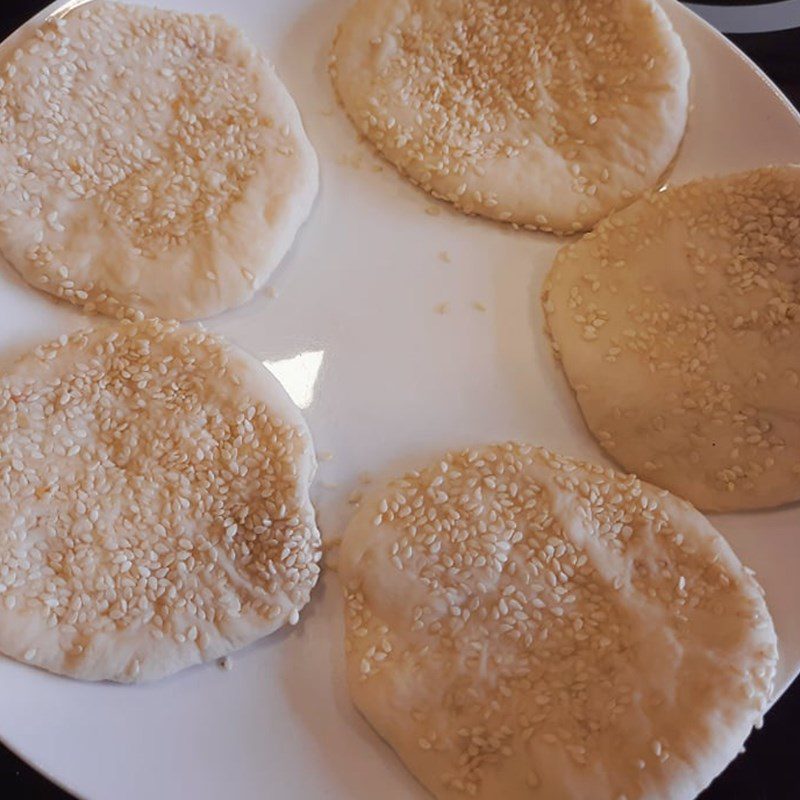
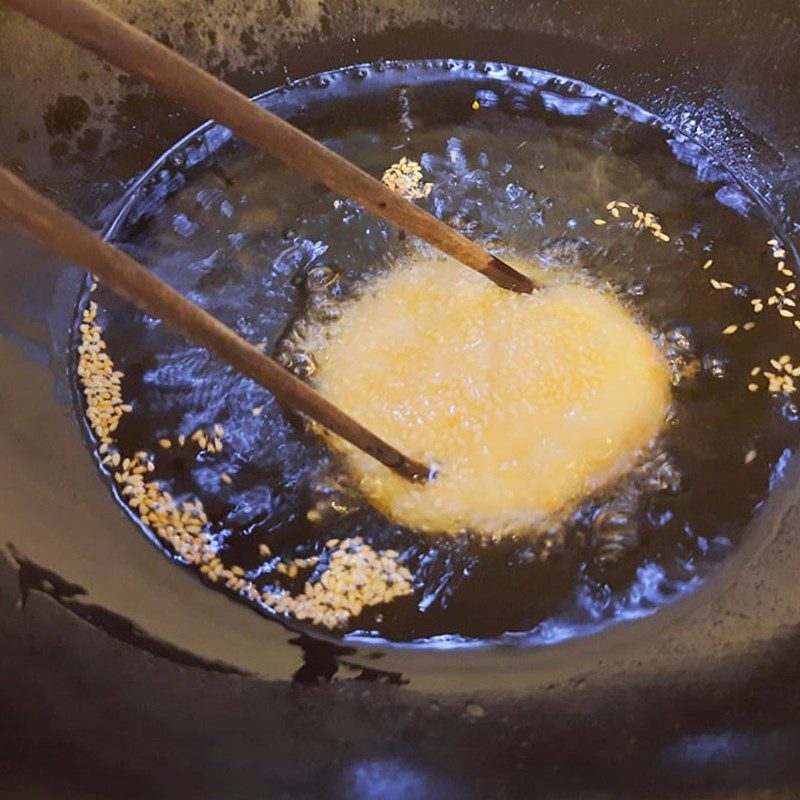
-
Final Product
With careful attention to the dough kneading and proofing time, you will have your favorite fried cake right at home without going far.
The cake is soft, fluffy, and puffs up with a light sweetness that surely everyone from young to old will love, especially when enjoyed with a cup of hot tea.
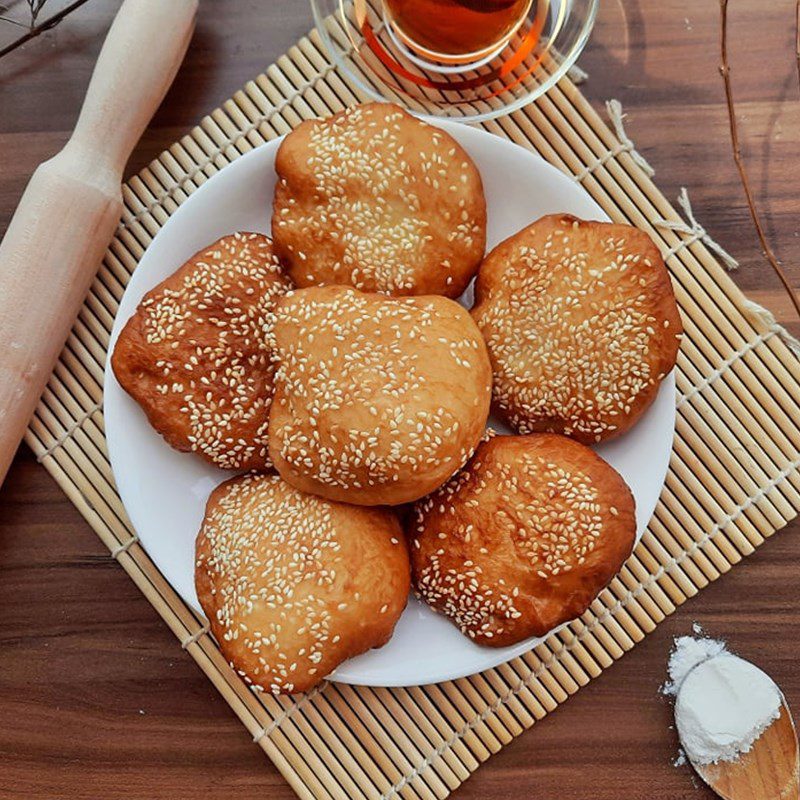

Tips for successful execution
- If the dough is rolled too thin, the cake will not puff up; if the heat is too low and the oil is not hot enough, the cake will also not puff up (it is best to let the oil get really hot, then lower the heat to medium for frying) or if the dough is proofed for too long (the first proofing should be about 1 – 2 hours) and do not add salt when activating the yeast with water; only activate the yeast with water and sugar.
- When frying the cake, you need to use plenty of cooking oil, and when you drop the cake in, it must be submerged in oil.
- Instead of rolling in sesame after rolling out, you should roll the cake in sesame first and then roll it out so that the sesame sticks better.
- The first proofing should be at around 20 – 27°C. The second proofing temperature should be slightly higher, around 35°C. If the temperature exceeds 38°C, the yeast reacts slowly, and above 60°C, the yeast dies.
- When making the cake, sugar can be replaced with condensed milk, but the cake may burn quickly, or you can try mixing both sugar and condensed milk.
- It is advisable to make just enough to eat in one day; do not make too much because if left until the next day and fried again, it will not taste good.
User Trinh showcases the fragrant and puffy cake that you have successfully made according to the instructions from TasteVN. The flavor is no different from the shops. Try to show off your skills with your nimble hands; it’s not too difficult.
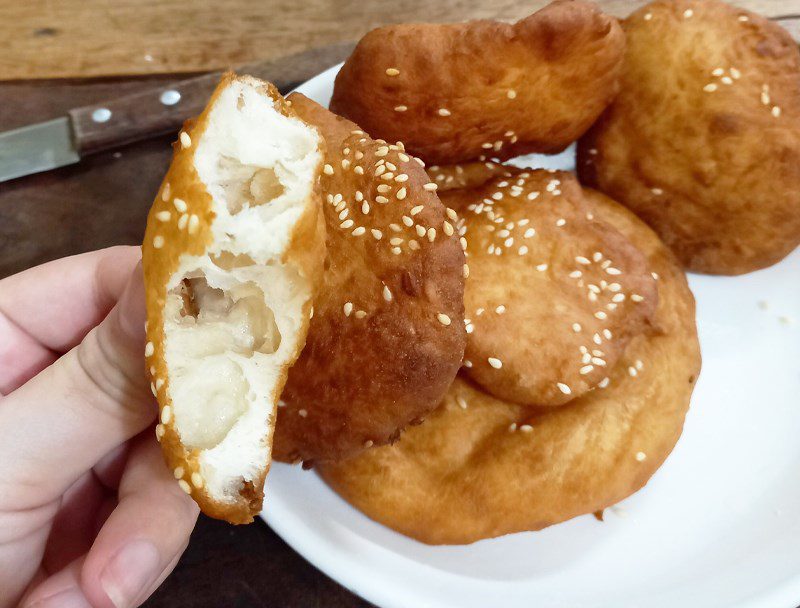
See more
The dish bánh tiêu is soft and fluffy with a mild sweetness that will make anyone who tries it fall in love immediately. Wishing you success with this recipe!
https://www.facebook.com/daisy.angle.585
